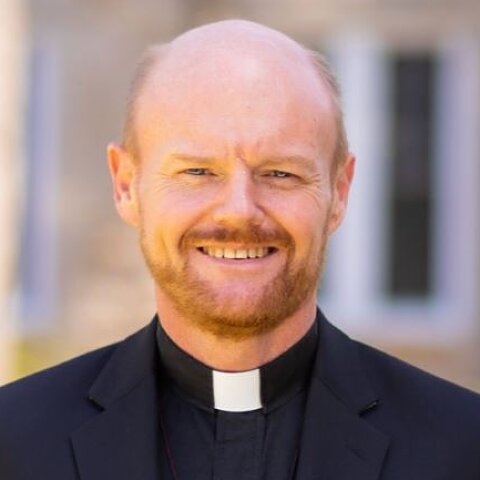Commentary on Psalm 91:1-2, 9-16
Franklin D. Roosevelt once famously asserted his firm belief that “We have nothing to fear but fear itself.” Those were words that the United States needed to hear in the wake of the attack on Pearl Harbor. While fear sometimes emerges from perceived threats, it emerges also from real, even dire threats to mind, body, or spirit. In either case, fear is a force to be reckoned with—and reckon with it we must, because not doing so brings harm of its own. “You gotta have a place where you process your fears, because if you don’t process your fears, they will devour you [and] they will immobilize you.”1
That Scripture is and can help form just such a place is nowhere more evident than with the Psalms. As displayed by Psalm 91, these texts conjoin a relentless realism with bold hope and confidence that speaks directly to those things that would generate fear.
As we begin Lent, the season encourages us to slow our pace so that we can take stock and reflect upon our faith and life. These disciplined weeks should include a reflection upon, a processing of, those things that cause us fear. And in this task, it is very important to be specific—to name those things that cause fear. For this reason, the following commentary is written with the whole of Psalm 91 in mind.
Verses 3-8 have the courage to specifically identify by name those things that cause fear, such as the “snare of the fowler” and “deadly pestilence.”2 Such specificity is crucial. Sources of fear that remain in the shadows of ambiguity are difficult to process. But calling them into the light with the particularity of a name reduces their power to devour and immobilize.
Psalm 91 has no superscription as do many psalms and does not fit neatly into any typical form-critical category. Still, the overall structure provides further guidance for processing fear. Careful examination shows that there are three speakers, or alternatively, three participants in this psalm. In verses 1 and 3-13 we hear from the poet, addressing the one who is in need of reassurance in the face of fear. In verse 2, there are the words of the one needing reassurance, or at least the words the poet hopes to empower and evoke in the person. And in verses 14-16, we find a somewhat surprising third participant—God, speaking very directly with multiple first person verbs.
Walter Brueggemann has frequently commented on the dialogical nature of the psalms.3 Rarely does the psalter exhibit extended one-way speech, but rather far more often is characterized by some kind of dialogue. In other words, the psalms do not emerge from and are not intended strictly for isolated, quiet pondering. Instead, they are bound up in the setting of conversation. This is most certainly true for the processing of fear. It is not something that can be readily accomplished alone, but requires conversational accompaniment—with those around us who may have some familiarity with some of our fears, and with the one who knows all our fears. We have all three parties present in Psalm 91.
This psalm also demonstrates that processing fear can include retreat to a safe space. “The shelter of the Most High” and the “shadow of the Almighty” (verse 1) and references to God as “my refuge” and “my fortress” (verse 2) speak very reassuringly of such a place. Much like the words of FDR, sometimes pullback to a safe place is the thing that is needed. Yet, the processing of fear cannot turn a safe place into an indefinite hiding place. And so, Brueggemann sees in Psalm 91 not only the comfort of safe space, but also the reassurance of safe journey.4 God’s protection is not restricted only to certain spaces, but travels with us—an “escort who makes safe passage possible.”5 Although we all travel along roads where we are bound to encounter the forces of evil, “The Lord will guard you in all your ways” (verse 11).
Psalm 91 provides a resilient source of hope and confidence in the processing of our fears. In fact, some of its words can lead us to believe that we are being promised a fail-safe shield against anything that would cause fear. “No evil shall befall you, no scourge come near your tent” (verse 10). “On their hands they will bear you up, so that you will not dash your foot against a stone” (verse 12). However, the psalm as a whole does not make such a promise. Indeed, processing fear does not include the notion that we will never again encounter anything that causes fear.
The power of this psalm lies not in the notion of a magic trick that makes all things that might cause fear to vanish, but rather in the notion of companions in our processing, and most especially, a God who prevents those things from having dominion over us. In the midst of all the first person commitments made by God in the last verses, there is no promise to ensure that we avoid anything that would cause fear. Instead, what God does promise is, from the midst of such things, to “answer,” “be with,” “protect,” and “deliver” (verse 14). The reassurance we have spoken directly from God as this psalm concludes is that “[T]he world itself may not be any safer, but our place in it is more secure, our movement through it more certain.”6
Notes
- Walter Brueggemann, “Why the Old Testament Must Not Go Away.” Sept 22, 2014 Freitheim Lecture at Luther Seminary, quote taken from Q & A after lecture. https://www.youtube.com/watch?v=6E8OYS8fcas&t=1079s
- References are from the New Revised Standard Version unless otherwise noted.
- E.g. Walter Brueggemann, Praying the Psalms: Engaging Scripture and the Life of the Spirit, 2nd Edition (Eugene: Cascade Books, 2007).
- Walter Brueggemann, The Message of the Psalms: A Theological Commentary (Minneapolis: Augsburg, 1984), 156.
- Brueggemann, 1984, 157.
- A citation attributed to John Calvin in: Ellen Davis, Getting Involved With God: Rediscovering the Old Testament (Cambridge: Cowley Publications, 2001), 4.


March 6, 2022